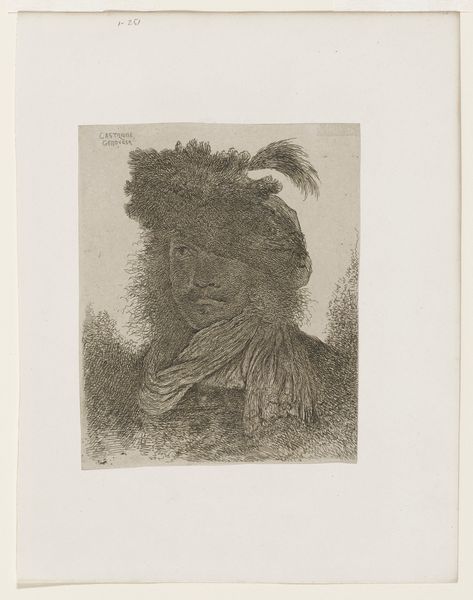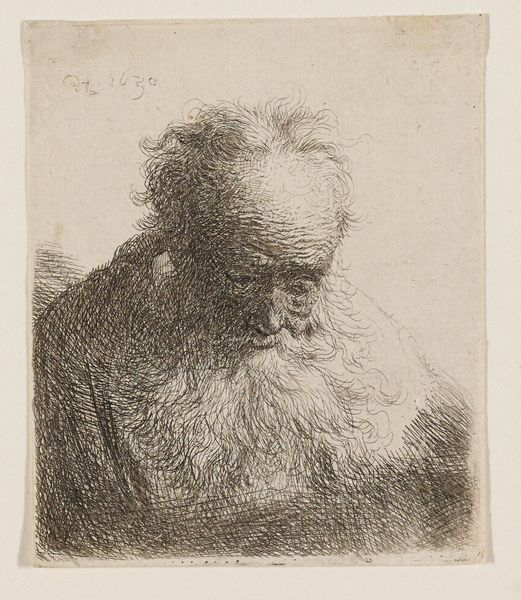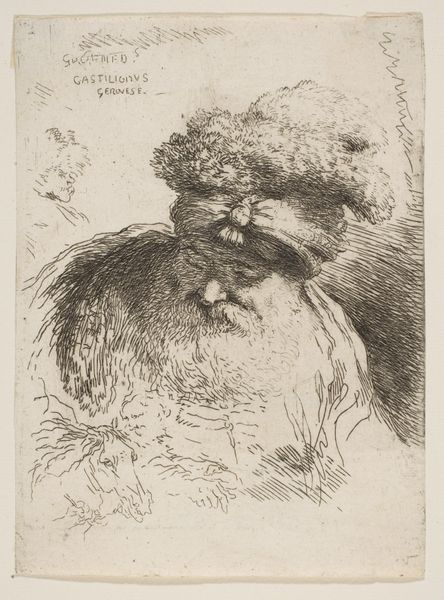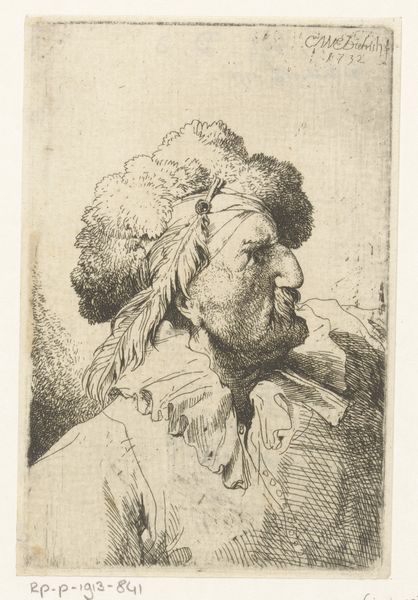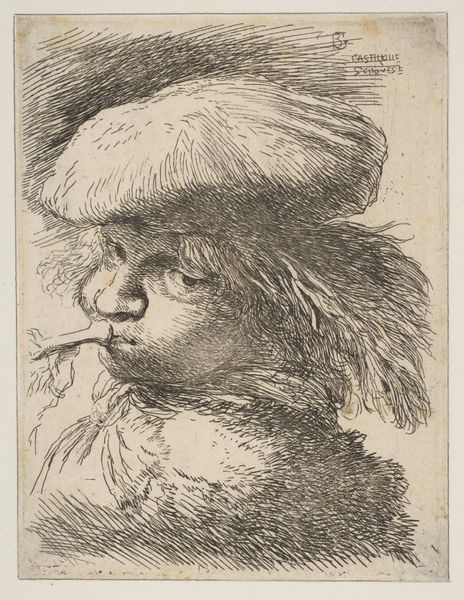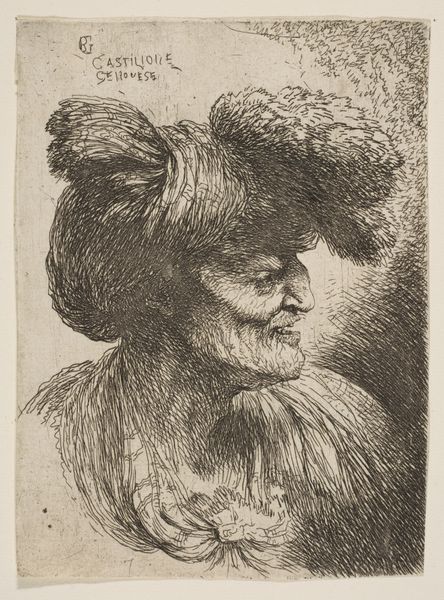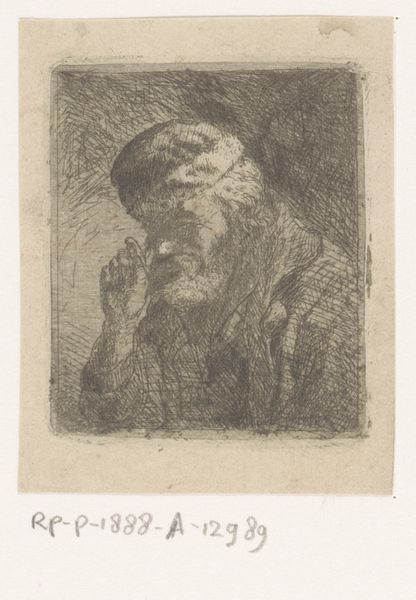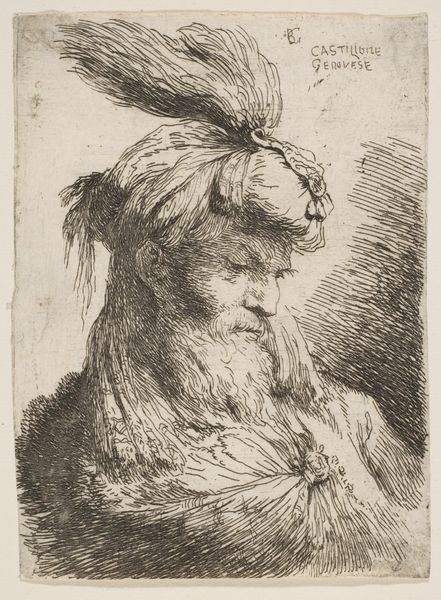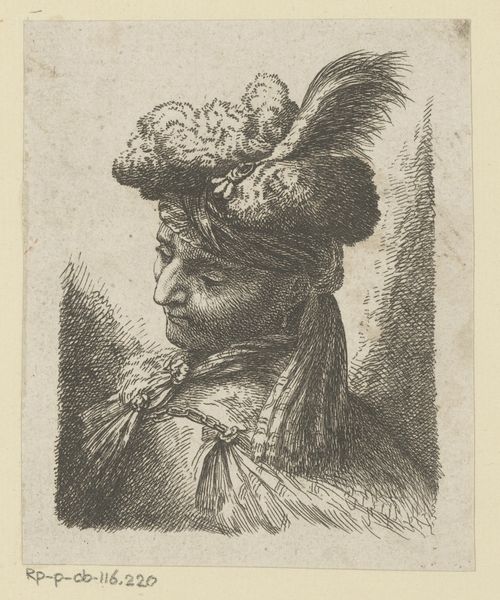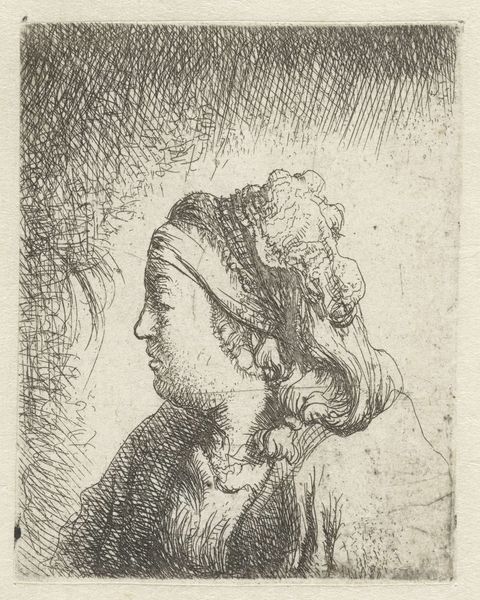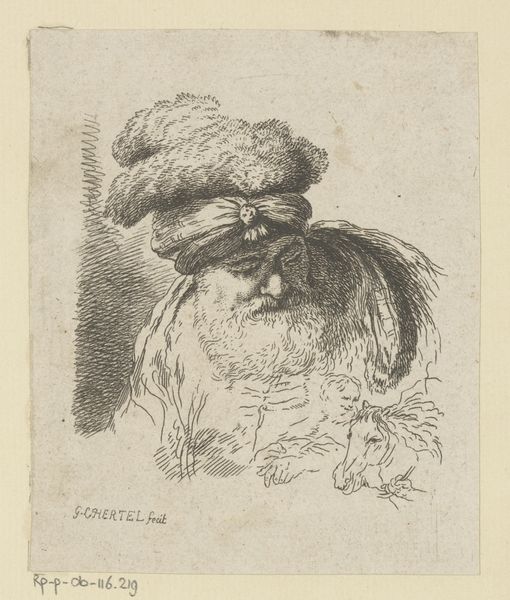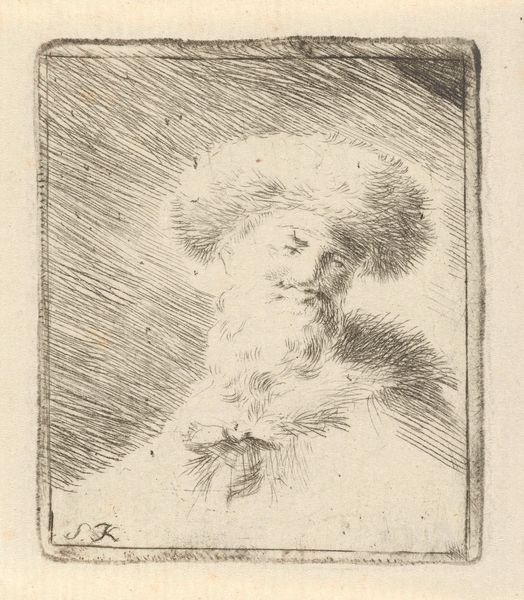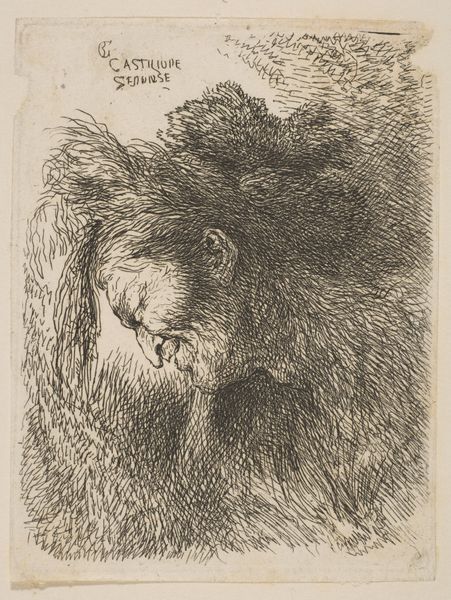
Head of a man in shadow turned slightly to the left, from the series of 'Large Oriental Heads' 1640 - 1650
0:00
0:00
drawing, print, etching
#
portrait
#
drawing
#
baroque
# print
#
etching
Dimensions: Sheet: 7 1/16 × 5 11/16 in. (18 × 14.5 cm)
Copyright: Public Domain
Curator: The air around Giovanni Benedetto Castiglione’s “Head of a man in shadow” seems thick with atmosphere. Created sometime between 1640 and 1650, this etching from his “Large Oriental Heads” series at the Metropolitan Museum evokes such a mysterious presence. Editor: It really does, almost overwhelmingly so. The density of the line work—it threatens to entirely obscure the face beneath all those feathery marks and dense hatching. Is "Oriental" meant to suggest trade relations or exoticism at that time? Curator: Probably both, which is revealing of seventeenth-century mindsets. Beyond simple exoticism, depictions like this often linked visual qualities with specific symbolic associations carried by costume and pose. In Castiglione's image, look at the treatment of light and shadow—how the sitter is both obscured and revealed. What comes to mind when viewing the shadow's symbolism here? Editor: Initially, a feeling of hidden identity and economic inequalities – perhaps commenting on social mobility. It feels intentionally ambiguous. Thinking about the labor, too: consider the number of plates Castiglione must have etched to distribute this to wealthy collectors and academics in multiple prints. Do we know much about the circulation of prints during this period? Curator: Quite a lot actually. Printed works were certainly viewed by the wealthy but they also found audiences amongst artists themselves to disseminate visual and stylistic concepts, such as through collections of studies or individual sheets, offering accessible yet prestigious avenues to explore novel styles or motifs. In this “Oriental Head,” we have to acknowledge the legacy of cultural misunderstanding it propagates, while recognizing Castiglione's talent. Editor: I see your point. And what does it mean for us, engaging with this image today? I think looking at it as a crafted object gives a voice to laborers. We are reminded of the exploitation, trade networks, consumption...and yet Castiglione's skill. A bittersweet image with many implications. Curator: Exactly. The work encourages us to consider both its historical place and its continuous existence as image—how visual ideas perpetuate through time, modified by perception. This head exists between worlds—historical artifact, object of craft and commodification, and a portal to explore the complexities of cross-cultural imaginings. Editor: Well put. It shows the way an artist mediates not only material but our engagement to larger global exchange, through symbols that persist to the modern day.
Comments
No comments
Be the first to comment and join the conversation on the ultimate creative platform.
